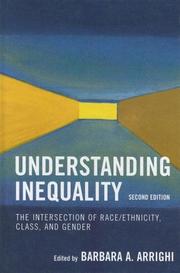| Listing 1 - 2 of 2 |
Sort by
|
Book
ISBN: 1280597615 9786613627445 1614510865 9781614510864 1614510946 9781614510949 Year: 2012 Publisher: Berlin Boston
Abstract | Keywords | Export | Availability | Bookmark
 Loading...
Loading...Choose an application
- Reference Manager
- EndNote
- RefWorks (Direct export to RefWorks)
This book explores an understudied area of language development in autism - namely, how children with autism learn the meaning of verbs. The key feature is a profile of verb acquisition in autism derived from qualitative analysis of the conversational language of ten children with autism. Douglas examines whether this profile is typical or atypical compared with verb learning in neurotypical children. Verb use is central to linguistic development, and the ability of children with autism to develop and use verb categories is of interest, because verbs also encode information about the number and type of participants and the temporal location of the activity/event. Moreover, the acquisition of verb meanings is often dependent on other cognitive skills, such as the recognition that human beings have beliefs and desires which motivate their actions. All these are areas which are widely considered problematic for children with autism and continue to generate much discussion among researchers and clinicians. This investigation is among the first studies of its type, offering new insights into the process of language acquisition in autism.
Language acquisition. --- Language disorders. --- Autism in children. --- Autistic disorder --- Childhood autism --- Early infantile autism --- Infantile autism --- Kanner syndrome --- Kanner's syndrome --- Autism spectrum disorders in children --- Dysphasia --- Communicative disorders --- Acquisition of language --- Developmental linguistics --- Developmental psycholinguistics --- Language and languages --- Language development in children --- Psycholinguistics, Developmental --- Interpersonal communication in children --- Psycholinguistics --- Acquisition --- Autism. --- Language Development. --- Semantics. --- Social Cognition. --- Syntax. --- Verbs.


ISBN: 0742546780 1461646545 9781461646549 1299790437 9781299790438 0742546799 9780742546790 9780742546783 Year: 2007 Publisher: Lanham, Maryland Rowman & Littlefield Publishers
Abstract | Keywords | Export | Availability | Bookmark
 Loading...
Loading...Choose an application
- Reference Manager
- EndNote
- RefWorks (Direct export to RefWorks)
As the age of globalization and New Media unite disparate groups of people in new ways, the continual transformation and interconnections between ethnicity, class, and gender become increasingly complex. This reader, comprised of a diverse array of sources ranging from the New York Times to the journals of leading research universities, explores these issues as systems of stratification that work to reinforce one another. Understanding Inequality provides students and academics with the basic hermeneutics for considering new thought on ethnicity, class, and gender in the 21st century.
Equality --- Minorities --- Social classes --- Sex role --- Social conditions. --- United States
| Listing 1 - 2 of 2 |
Sort by
|

 Search
Search Feedback
Feedback About UniCat
About UniCat  Help
Help News
News